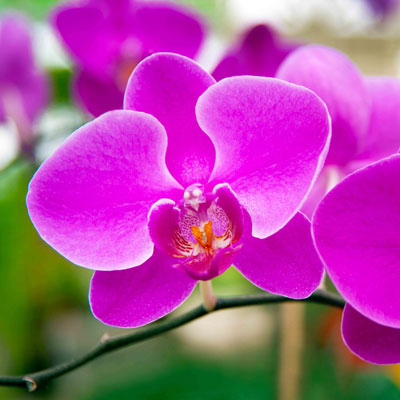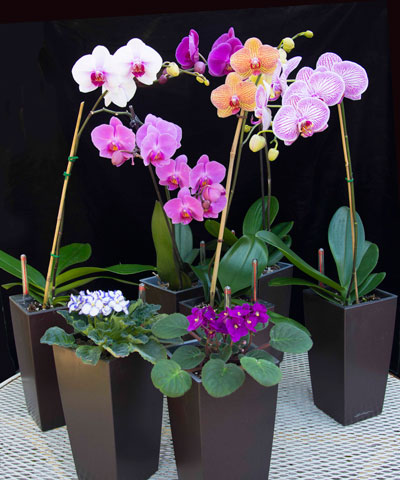Prime time for Phalaenopsis orchids
Looking for a wonderful Valentine’s gift? One that will keep blooming for many weeks and that will rebloom for years to come?

Photo: Phalaenopsis orchid blooming for second year in the Sperry collection.
Phalaenopsis orchids, also called “moth” orchids because of their distinctive shape, are perhaps the most easily grown of the hundreds of orchid species (one of the largest plant families in the world).
You’re seeing them for sale in all types of stores right now, but the prime selling season will soon be over. They bloom primarily in winter and very early spring, so look for their handsome flowers in shades of lavender, purple, white, pink and apricot.

Photo: It’s easy to see where the name “moth” orchid comes from when you see the shape of the flowers.
Tips to success with these orchids…
• Very bright light, but no direct sunlight during the summer. East windows have worked well for me, but we also have shade trees filtering some of the sun in summer.
• Extremely porous planting mix, primarily coarse bark. These plants are epiphytes, meaning they grow in nature suspended from the trunks of trees in the rain forest.
• Aim to repot them every couple of years. Such highly organic planting mix breaks down rather quickly and must be replaced. Spring is the best time to do so.

Photo: Lechuza self-watering pots have made care of the Sperry orchids incredibly easy. They grow and bloom in an east window with summer shade from nearby pecans. (Lechuza pots are more expensive than one might expect, but I’ve found that they’re worth it. This is the Maxi-Cubi in Expresso metallic color. Here is a link to that part of their website.
• Keep them constantly moist, but never soggy wet. Allow the planting mix to become somewhat dry before you water again.
• Fertilize with a high-nitrogen, water-soluble plant food every month during the spring, summer and fall, less often during the dark days of winter.
• Once the flowers have all fallen, let the old stalk be your guide. If it shrivels and turns brown, trim that portion off. Some people prefer to cut the stalks back to within a couple of inches of the soil line to force them to regrow straight and true from down below. Others let them send out new flowering shoots from the old stalks. You just have to be prepared to stake them securely.
Here is a useful page from the American Orchid Society on care of Phalaenopsis orchids.
